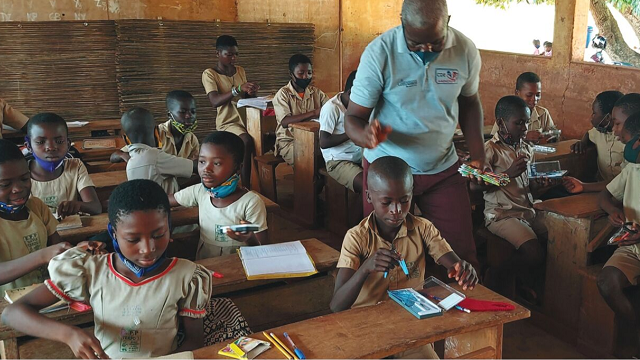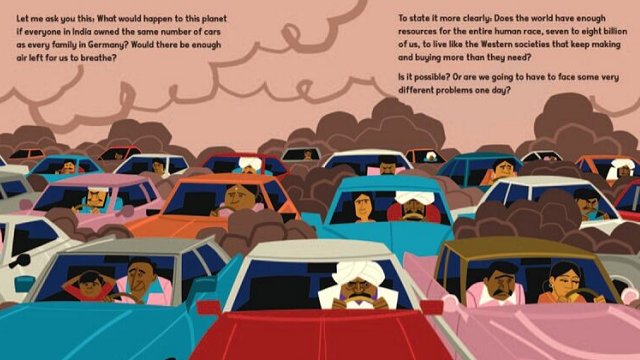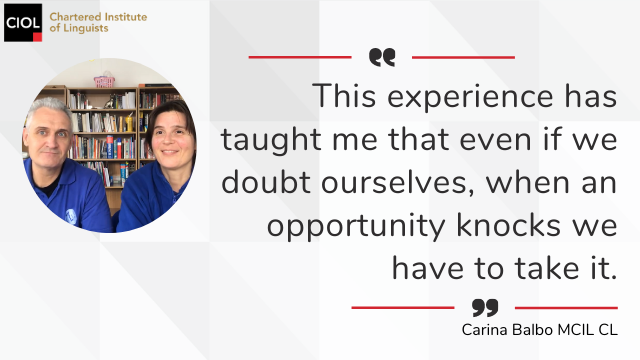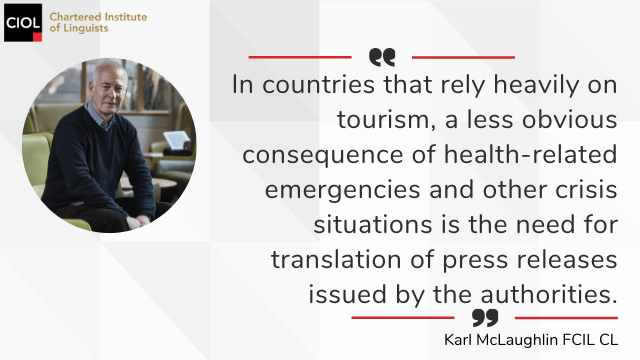-
QUALIFICATIONS
- For Linguists Worldwide
- For UK Public Services
- Preparation
- Policies & Regulation
-
MEMBERSHIP
- Join CIOL
- Membership grades
- NEW for Language Lovers
- Chartered Linguist
- Already a member?
- Professional conduct
- Business & Corporate Partners
-
ASSESSMENTS
- For Second Language Speakers
- English as a Second Language
-
EVENTS & TRAINING
- CPD, Webinars & Training
- CIOL Conference Season 2025
- Events & Networks
- CIOL Mentoring
-
NEWS & VOICES
- News & Voices
- CIOL eNews
- CIOL Awards
- The Linguist
- Jobs & Ads
-
RESOURCES
- For Translators & Interpreters
- For Universities & Students
- Standards & Norms
- CIOL & AI
- All Party Parliamentary Group
- In the UK
- UK Public Services
- Find-a-Linguist
Come fly with me
By Karl McLaughlin
Translating inflight magazines and why it is the perfect gig for translators with wanderlust!
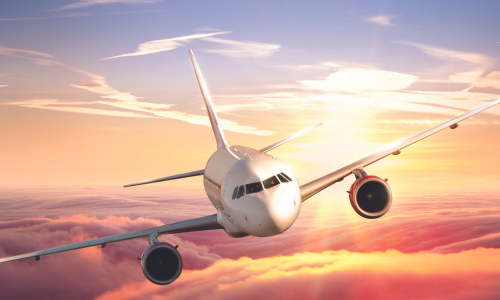
Who has not read a travel magazine or supplement and felt jealous of the writers who are paid to visit appetising destinations? Among linguists, such travel possibilities tend to be associated with conference interpreters lucky enough to be recruited by organisations that organise meetings in attractive locations, with the chance to stay on for a few days afterwards.
However, translators can also access such opportunities to wing their way to interesting parts, albeit without going near an actual airport. Several major airlines publish inflight magazines in two or more languages, including Air France’s EnVols and Iberia’s Ronda, and the publications are a key part of their international visibility. Some smaller airlines also produce magazines in printed or digital format for passengers to browse on their flights.
The translation work for these magazines can be an important source of income. Many would jump at the chance of an annual contract offering around 20,000 words every month. However, as we shall see, translating inflight content can be anything but straightforward.
NT is the magazine of the Spanish regional airline Binter, which carries approximately 4.5 million passengers a year on its 200+ daily flights between the Canary Islands, to other parts of Spain and to 17 international destinations in Europe and North Africa. Offering detailed information on a range of topics, such as beaches, city visits and local festivities, as well as a monthly What’s On guide covering several cities, it can be considered typical of inflight publications.
Also included are special features on each destination, covering its art and architecture, and suggestions for walks in nature. Add to the mix a monthly interview with a well-known figure from the Canary Islands, snippets of business news and a selection of advertising features on anything from private hospitals and dental clinics to aquariums and museums, and you are guaranteed to never have a dull translation moment.
A working knowledge of the airline industry proves valuable given the regular coverage of topics such as airport operations and aircraft types. The magazine also contains frequent mention of the airline itself, including routes, purchases of new planes, cooperation with deserving social causes, passenger milestones, and a round-up of general news from the previous month, all designed to paint it in the best possible light. The benefits available to its frequent flyers, directly from the airline and through its many partners (discounts on hotel stays, car hire etc), are also regular features.
Expanding vocabulary
Something you realise after just a few issues is the need to expand your descriptive vocabulary to convey the attraction of locations. The remarkably limited range of Spanish expressions used is striking, with almost every location billed as a paraje único, entorno privilegiado or marco incomparable. However, systematic and literal rendering as ‘unique spot’, ‘privileged surroundings’ and ‘incomparable setting’ would jar an English ear.
For texts offering hiking suggestions, one of the challenges is ensuring the descriptions of features encountered along the way (trees, other vegetation, rock formations, etc) match what the visitor sees rather than what you think the term translates to initially. This often requires extensive research into specific locations, including a detailed study of maps, photos on official websites and even social media and Tripadvisor comments.
Not every montaña in Spanish is an actual mountain; it is often better rendered as a ‘hill’, ‘mound’ or ‘mount’. Similarly, a barranco may not be a full-blown (and potentially off-putting) ravine. It is also important to check whether a pista or camino is a track, trail, path or even a road. In the case of city walks, this visual research proves crucial for clarifying references to the mythological creatures on Ammannati’s Fountain of Neptune in Florence, for example, or selecting appropriate adjectives to describe the statue of María Pita, the ‘heroine of La Coruña’, on this city’s main square.
Painstaking details
As with all travel publications, food occupies an important place in NT and it unashamedly seeks to generate interest in the local gastronomy of Binter’s destinations. The focus is often on traditional dishes, all invariably billed as palate-pleasing, mouth-watering and the product of knowledge passed down from generation to generation. Coverage of the gastronomic wonders of a particular location takes the form of longer features (including recipes for the most popular dishes) or shorter sections inserted into more general descriptions of a city.
Since many of the destinations are coastal, fish and seafood appear frequently. With lesser-known species, whose local names vary greatly within Spain, detailed investigation can be required to arrive at the correct name in English. A single sentence describing the local seafood on offer in La Coruña’s restaurants listed no fewer than 18 different types! Occasionally, the effort causes you to question whether the job is worthwhile, but you pin your hopes on another page with more straightforward content to compensate for this Herculean labour.
These hopes were dashed in one recent issue where another of the regular features – an advertorial for a group of private hospitals – focused on breast reduction surgery. Considerable time was spent researching the topic and then remembering that English often uses plainer language than Spanish when describing medical procedures to non-specialist readers.
This is not to say that translating such content is not enlightening: I knew little about the benefits of ‘zero drop’ and ‘barefoot’ footwear before tackling a piece on correcting gait problems. Similarly, an advertorial for an orthodontist made me more knowledgeable on the benefits of aligners, rather than braces, for straightening children’s teeth.
Thankfully, some relief is generally at hand in the economy section, which usually contains interesting and, at times, humorous features (my favourite: ‘Should you take a lawyer to a job interview?’), along with snippets of relevant business news such as the latest employment figures and post-pandemic tourism growth.
Here, the main concerns tend to be stylistic to ensure that the product reflects the expectations of analogous texts in English, which tend to steer clear of the more ornate and hypotactic approach of Spanish. However, it is important that the natural instinct to prune does not result in an excessive shortfall in word count and create a headache for the layout team, for whom the Spanish length is perfectly calculated for a quarter or half page.
The word count tends to be less problematical in other pieces given that, while English versions of Spanish texts tend to be slightly shorter, the differences are often negligible because brief explanations of cultural terms and bracketed clarifications of borrowings need to be added.
A perfect fit
In terms of workload, the process is a perfect fit for a translator with other professional commitments, in my case university-level teaching. An excellent relationship with the long-standing client (a communications firm, not the actual airline) means the texts of varying lengths (from 150 to 1,500 words) arrive in manageable batches, and I have gradually learnt to predict the most intensive parts of the cycle. Virtually the only aspect set in stone is the obligation to be available for half a day at the end of each month to check proofs before printing.
Apart from the obvious wage benefit, translating an inflight magazine provides insider access to enticing locations such as Pamplona and Granada in Spain, Madeira and the Azores in Portugal, and Marrakesh, Tangier and Fez in Morocco. These are destinations which I feel I now know inside out – every palace, museum, art gallery, walk and beach, not to mention the local food – although this wealth of knowledge would probably make me tiresome company on an actual visit.
To borrow from Forrest Gump, an inflight magazine is like a box of chocolates: you never know what you’re going to get. That is what makes it a great way to hone your translation skills. The varied content from general tourism information to more specialised knowledge is guaranteed to keep you on your toes, even if some pieces become a little predictable and the output starts to flow more easily than it did at the beginning. Feliz vuelo!
Karl McLaughlin FCIL CL is a professional interpreter/translator and Senior Lecturer in both disciplines at Manchester Metropolitan University. Previously he was course coordinator of the MA in Conference Interpreting at La Laguna University and Director of the MAIT Programme at the University of Bradford. His translation work has included producing the English version of a Spanish newspaper.
This article is reproduced from the Autumn 2023 issue of The Linguist. Download the full edition here.
More
The Chartered Institute of Linguists (CIOL), Incorporated by Royal Charter, Registered in England and Wales Number RC 000808 and the IoL Educational Trust (IoLET), trading as CIOL Qualifications, Company limited by Guarantee, Registered in England and Wales Number 04297497 and Registered Charity Number 1090263. CIOL is a not-for-profit organisation.


